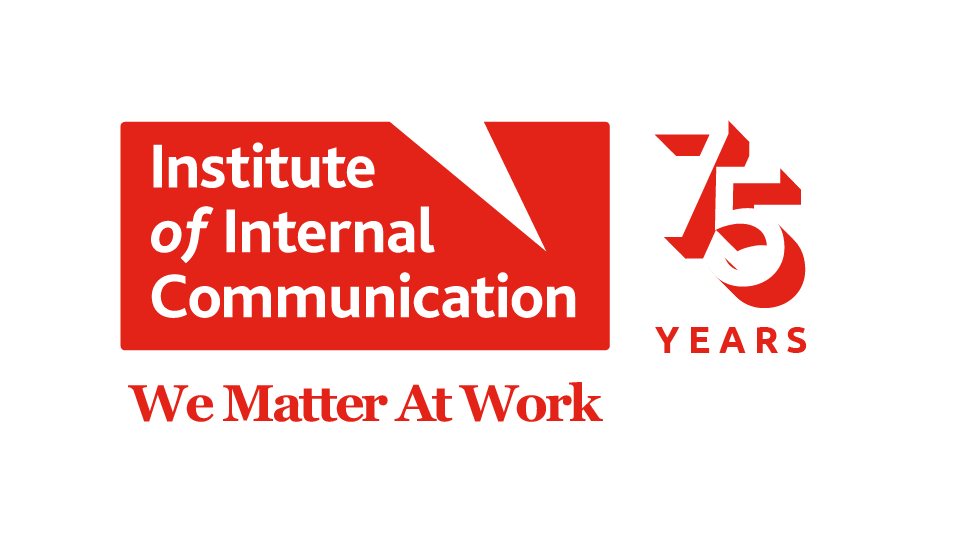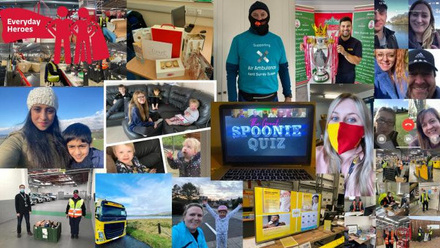In February 2020, getting approval to roll-out a major online collaboration platform across an organisation of thousands may have taken months of discussion with the executive committee about the cost, the need, the benefits, the process… By March 2020, when Covid-19 was escalating in the UK to the point of lockdown, you could have got a new comms channel rolled out quicker than you could send an email.
In Hertfordshire County Council, leaders had been monitoring the pandemic around the world from the start of the year, sharing information internally on how coronavirus was spreading. When the first cases were reported in Hertfordshire, communications intensified and leaders and IC colleagues mobilised quickly to make decisions.
Microsoft Teams was launched in response – and ahead of the planned roll-out.
Sarah Bassill, senior campaigns officer for transformation, explains: “We were planning to roll it out later this year and we had been trialling it, but lockdown accelerated it so that we could stay in touch remotely. That speed of decision-making was a positive aspect of the crisis. It was quite liberating to cut through the red tape.”
Teams rolled out to all 8,000 employees in phases over a couple of weeks, so that the network wasn’t overloaded.
“It was driven by our Technology team, who did a great job,” says Sarah.
“Normally, when we introduce something like that, we would have a detailed support programme. Teams is so intuitive, we didn’t need to. That was surprising. Sometimes we underestimate people. There was an early user channel, so colleagues could ask questions. But I’ve realised that if the technology is good, you don’t need a big campaign.”
Getting leaders on board with Teams
Teams proved a worthy alternative vehicle for some traditional formats. The IC team had been planning a virtual town hall prior to lockdown – a new approach for the Council.
“We got our chief executive and his senior team on a Teams call to talk about our response to coronavirus and thank colleagues for their efforts during a challenging time,” says Sarah. “It was an easy way to get the leadership team all in one place, and we recorded the session and shared it with staff.”
Internal communication has used Teams to gather leaders in other ways.
The leadership forum of 120 senior managers, who usually meet face to face quarterly, used Teams for more frequent sessions to discuss questions from around the business, often with input from subject matter specialists – in HR or Technology, for example. These larger groups were subsequently split into smaller groups to tackle specific issues – most recently around the Council’s response to and recovery from the pandemic, what worked well and areas for improvement.
Communicating during uncertain times
One of the most challenging aspects was the fast-changing nature of information, with daily briefings from the government having an impact on the workplace, and previous reports quickly going out of date. Senior figures in the Council needed to share messages with colleagues in good time – often without having all the answers.
“Some leaders thought they couldn’t communicate without having the details, so we had to reassure them that it is OK to not have all the answers,” reflects Sarah. “This is better than saying nothing.
“We communicated a lot. We were worried it was too much, but in a survey, 90 per cent of colleagues said the response was at the right level, so we’re all pleased that our comms has been well received.”
Sarah believes leaders have seen the IC function with fresh eyes. “Our role during the crisis has changed the perception of us strongly. We were given freedom to implement more things, without the usual layers of sign-off. There is definitely recognition for the need for more resource, which is positive.”
Supporting colleagues’ wellbeing
Leaders have been quick to recognise the changes in circumstances for employees.
“The words we have heard constantly are ‘Thank you’,” says Sarah. “We had to close a lot of council services and redeploy people into other roles, such as delivering food packages for those who were shielding. Our leaders have been overwhelmed by what everyone has been doing, and how they have been going above and beyond the usual day job.”
Mental health has been a key talking point and the council has shared messages and guidance to help colleagues look after themselves.
The Council’s IC team created a hub on the intranet with official guidance around Covid-19, including resources about mental health and wellbeing.
“When lockdown started, we were updating colleagues daily, but we scaled that back, though we’ve tried to keep mental health high on the agenda, and we have been finding hooks to link back to core mental health content – such as the recent Men’s Health Week.”
Providing light relief
While the Council used Yammer pre-Covid-19, Sarah admits, “I always felt we never had proper use for it”. The platform has come in to its own during remote working with a series of lighter ideas through a Together At Home group.
“We created a Spotify playlist and asked for suggestions for positive uplifting songs and for people to nominate colleagues to do the same. We had hundreds of colleagues on the thread sharing songs and suggestions, and reminiscing over concerts they’d been to. We had lots of lovely feedback. People said listening to the playlist made them feel emotional about colleagues they hadn’t seen for a while. It was so popular, we had to compile a second volume.
“To be inclusive – because music isn’t for everyone – we asked people to share photos using the hashtag #FromMyWindow, and when lockdown eased and people could go out more, we had photos #FromMyWalk. Yammer was filled with pictures of nature. It felt like a positive response to a negative few months.
“So much of our role as internal communicators is corporate and business-specific, or dealing with change programmes. What has been effective in the past few months is this work we’ve done to connect with people as people, not just employees – what are they going through on a personal level?
“Providing light relief is a big role for internal communication that gets a bit overlooked. Our people have got as much value out of the fun stuff during the crisis as the strategic information. I’d like us to do more of that in the future.”

“What has been effective in the past few months is this work we’ve done to connect with people as people, not just employees – what are they going through on a personal level?”
SARAH BASSILL, HERTFORDSHIRE COUNTY COUNCIL
Planning for the future
As part of the Council’s workplace safety group, a large part of Sarah’s time is now focused on communicating to staff about the work that has taken place to make sites Covid-19 secure for returning staff. The facilities team has put measures in place such as hand sanitiser stations, signage, marking out desks to show staff how they can safely social distance and installing Perspex screens in some areas.
“Working in the office is going to be different, so you need to be respectful,” says Sarah. “We’ve created new guidance and a video walking people through what it will be like coming back into the office – showing them in advance what they will see, so it’s not so daunting. Rather than landing a huge amount of information on people and saying the door is open tomorrow, we want to give people time to digest the changes, ask questions and be clear on what they need to do.
“There needs to be time for line managers to complete risk assessments for their team members at greater risk and consider which colleagues have roles which require them to be in the office. You can’t expect people to just accept it.
“Before the pandemic, we were big on promoting smart working – where work is something we do, not where we go. This crisis has definitely heightened that agenda.”
Remote working has worked well for many colleagues at the Council, boosted by the introduction of Teams, and Sarah recognises the organisation has been given a unique insight into how they might redesign how people work and shape culture.
“A big part of our engagement activity will be around what our new normal will be and our expectations for the future. Around health and wellbeing, for example, we have seen that more colleagues than before are saying their organisation cares about them, and we don’t want that to be sentiment that only applies in a global crisis.”





